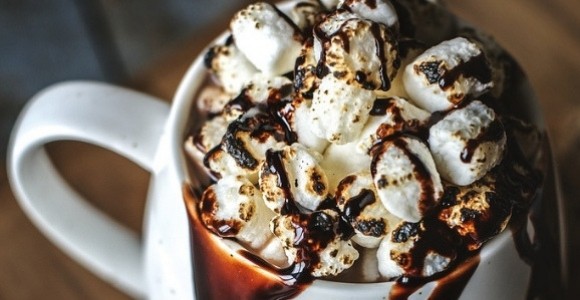What’s in a hot chocolate?

How often do you sit down by the fire, hot chocolate in-hand, and think about all the science behind the creation of this classic winter staple? Never, you say? Well, now is the time.
I know what you’re thinking, how can a hot chocolate be interesting? It is formed of such simple ingredients. Well, if you enjoy a creamy, thick hot chocolate, you will know that the key ingredient for this is milk. Milk in itself is incredible if you think about it. It is formed of two, usually immiscible ingredients, fat and water. However, due to the presence of emulsifiers, such as casein, these two substances can co-exist in perfect harmony.
A hot chocolate wouldn’t be a hot chocolate without cocoa powder. Mixing this in with your milk forms a colloid – a mixture in which solid particles are suspended within a fluid. However, be wary when mixing cocoa powder into milk – the surface tension of milk makes it difficult for the cocoa powder to penetrate it, which you may have noticed when your powder forms dry clumps on the top.
Whether you float them on top or mix them in, marshmallows are another bit of luxury in a hot chocolate that make you feel extra warm inside. Originally, marshmallows were a form of meringue, made from whipped eggs and sugar flavored with the juice from a marshmallow plant. Now, they are made from whipping a sugar syrup and gelatin together to form a foam that stabilizes when the gelatin sets, trapping air bubbles within it.
So, next time you make yourself a hot chocolate, you can spend a little bit of time appreciating all the science behind the warmest and coziest of beverages.